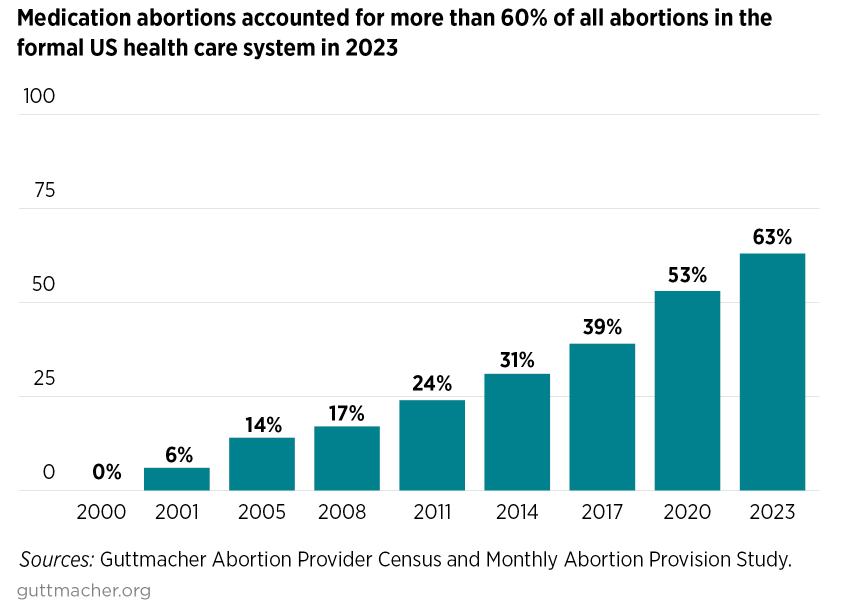
New data from the abortion-rights think tank the Guttmacher Institute show that over 63% of abortions in 2023 were conducted by abortion pill, up 10 percentage points from 2020.
Guttmacher, the research arm of Planned Parenthood Federation of America, estimates that nearly 643,000 abortions in the United States were medication abortions, typically using the medication mifepristone and misoprostol.

Mifepristone, the first pill in the chemical abortion process, works by cutting off the progesterone supply to the developing fetus. Misoprostol, taken between 24 and 48 hours after ingesting mifepristone, induces contractions to expel the fetus.
The Supreme Court is slated to hear oral arguments next week in a case questioning the Food and Drug Administration’s changes to the agency’s original approval of the drug in 2000.
In 2016, the FDA increased the gestational age limits for the approved use of mifepristone from eight weeks to 10 weeks. In 2021, during the COVID-19 pandemic, the FDA removed the requirement for an in-person physician visit prior to receiving a mifepristone prescription, opening the door for abortion pills to be prescribed by mail.
In March 2023, Texas federal Judge Matthew Kacsmaryk found in favor of the Alliance for Hippocratic Medicine’s suit against the FDA, overturning the entire approval of mifepristone. On appeal, the Fifth Circuit Court of Appeals in August upheld the 2000 approval of mifepristone but overturned the FDA’s 2016 and 2021 changes.
Guttmacher referenced the impending oral arguments in Alliance for Hippocratic Medicine v. FDA in its publication of its recent findings, saying that a return to the pre-2021 or pre-2016 regime would be “detrimental for people who either prefer or only have access to abortion using telemedicine.”
“The Court could restrict the ability to mail mifepristone directly to patients and reinstate the requirement for the drug to be provided in person,” Guttmacher’s recent report reads. “If outdated and medically unnecessary restrictions are placed on the provision of mifepristone — in contrast with the FDA’s evidence-based protocol — access to abortion across the country would be greatly impacted.”
The FDA’s warning on mifepristone indicates that between 2.9% and 4.6% of self-managed medication abortion patients, or approximately 1 in 25 women, will visit the emergency room following a complication, including sustained heavy bleeding or severe infection.
CLICK HERE TO READ MORE FROM THE WASHINGTON EXAMINER
Abortion statistics from Guttmacher tend to be higher than estimates from the Centers for Disease Control and Prevention due to several differences in methodology. One difference is that Guttmacher contacts every known abortion provider in the country from all 50 states, while the CDC only compiles voluntarily reported data from central health agencies.
In January, Guttmacher estimated that 878,000 abortions took place in the U.S. from January to October 2023. Between 2017 and 2020, the number of abortions increased by 8%, reversing a 30-year downward trend.







